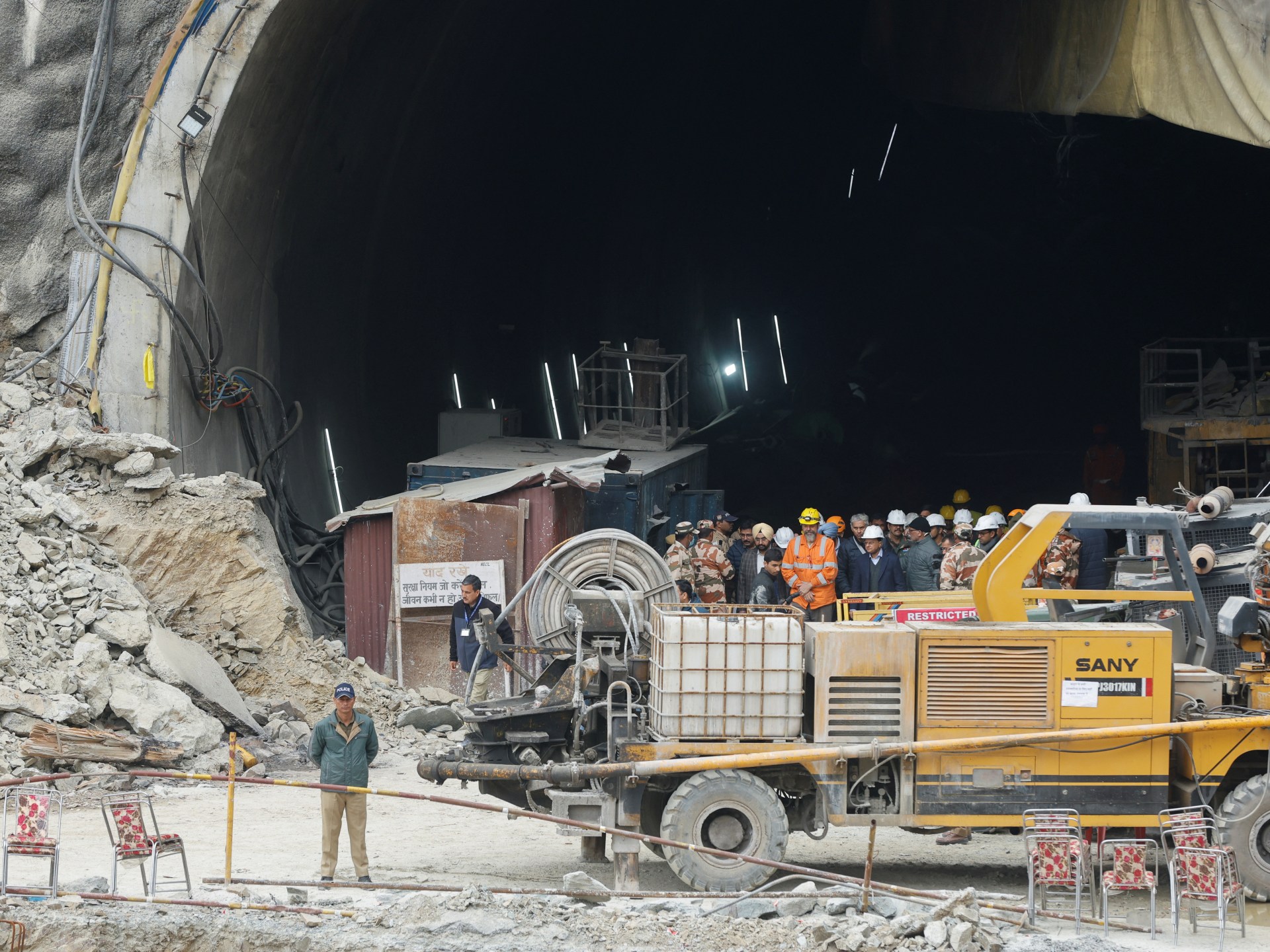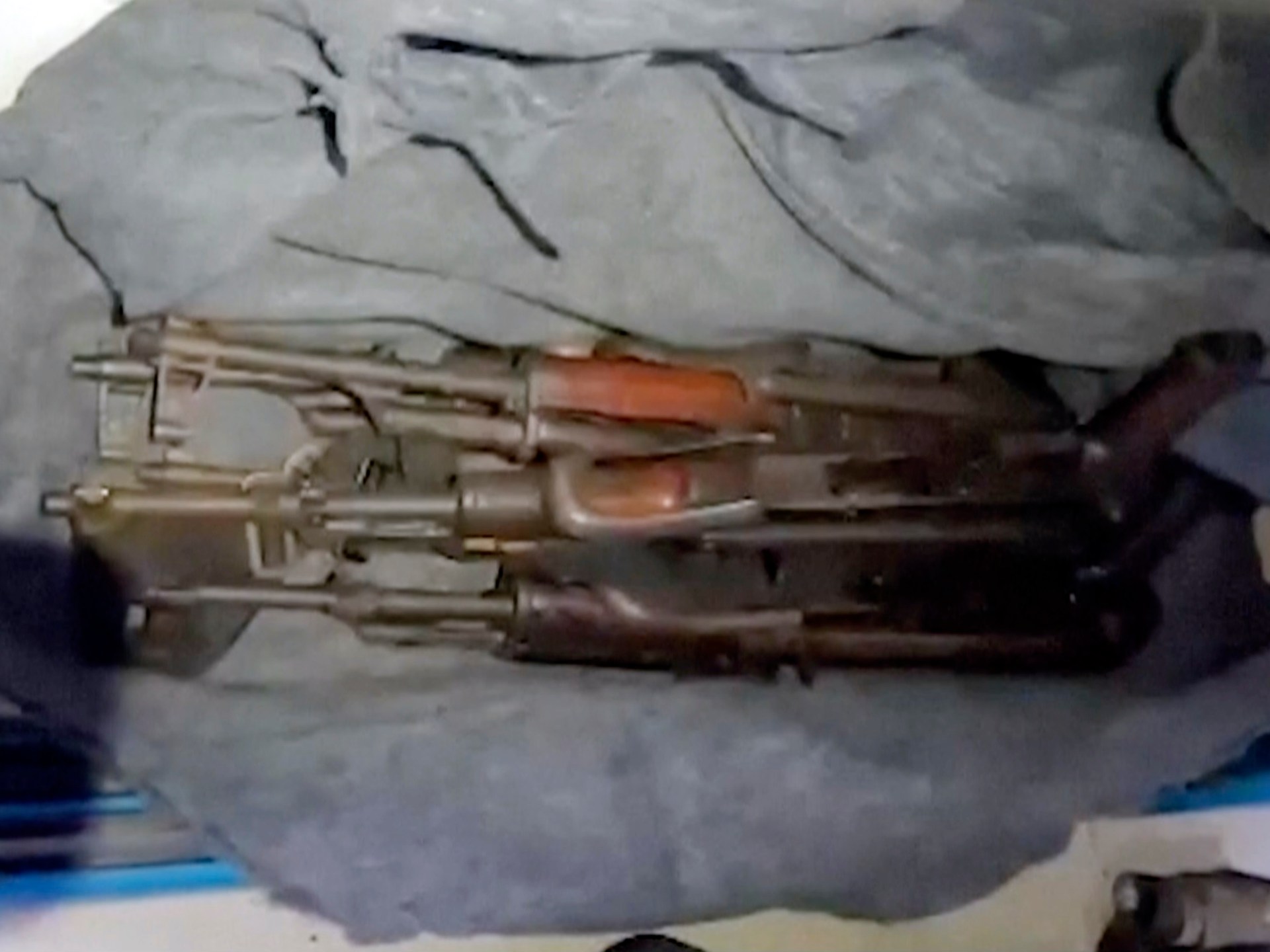
‘Rat miners’ are drilling through a narrow pipe to extract workers trapped in the Himalayan tunnel after high-performance machinery broke down.
Rescuers in India prepare to dig by hand to reach 41 workers trapped in a collapsed road tunnel for 16 days repeated setbacks.
Military engineers plan to use a so-called “rat hole mining” technique, digging the remaining nine meters (29 feet) by hand to clear away rocks and debris as temperatures rise in the remote mountain town in the Himalayan state of Uttarakhand sink .
The men, low-wage workers from India’s poorest states, have been stuck in the 4.5-kilometer-long tunnel in the state of Uttarakhand since the collapse on November 12th.
The men received food, water, light, oxygen and medicine through a pipe, but the machines’ attempts to dig a tunnel encountered a number of obstacles.
Attempts to drill a tunnel horizontally through the rubble in which the men were trapped failed due to the machine, and rescuers are resorting to hand drilling after clearing broken equipment in the narrow evacuation tube.
Drilling from inside the 900 mm (3-foot) wide pipe is being carried out by a team of six “rat miners” from central India, whom officials describe as “skilled workers.”
Rat mining is a primitive, dangerous and controversial method used in India primarily to clear coal deposits through narrow passages. The name comes from its resemblance to rats burrowing through narrow holes.
“Three of us will go into the tunnel, one will drill, the other will collect the dirt and the third will push the dirt through the cart,” Rakesh Rajput, one of the miners, told Reuters.
“We have been doing this for more than 10 years and there is enough space for us. The 41 men are also workers and we all want to get them out,” he said.
State and private agencies were involved in the rescue pursue other options. On Sunday they opened another route for the men with the aim of drilling a shaft directly from the mountain top.
As of Monday afternoon, they had drilled 31 meters (102 feet) of the 86 meters (282 feet), officials said, adding that the focus remained on the horizontal route.
“Skilled workers will do the manual drilling,” said Harpal Singh, a former head of the state-run Border Roads Organization. “This is a sure way to make progress.”
Bad weather could make rescue difficult. Thunderstorms, hail and lower temperatures of at least 9 degrees Celsius are forecast in the mountains.
“They are trained to work in any situation, so we don’t have to worry about it,” said Mahmood Ahmad, managing director of NHIDCL, the company building the tunnel.
Prime Minister Narendra Modi’s Principal Secretary or Chief of Staff PK Mishra visited the site and spoke to the captured men via a communication link. He told them that “everyone is trying to get you all out as early as possible.”
The tunnel is part of the Char Dham Highway, one of Modi’s most ambitious projects that aims to connect four Hindu pilgrimage sites via 890 km (553 miles) of roads.
Authorities have not said what caused the collapse that trapped the men as they neared the end of their night shift, but the region is prone to landslides, earthquakes and flooding.






Recent Comments